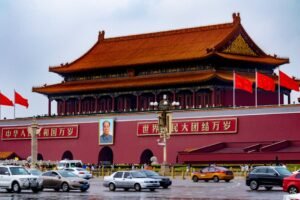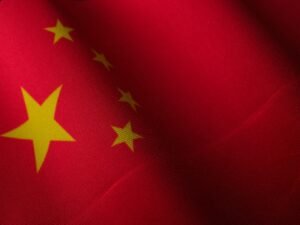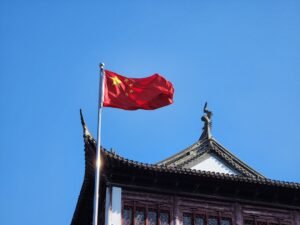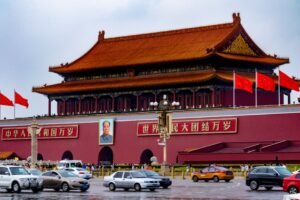Mandarin Chinese is a language rich in history and culture, and one of its most fascinating aspects is the use of idiomatic expressions, known as chengyu. These four-character phrases encapsulate profound meanings and convey wisdom that has been passed down through generations. Chengyu often derive from historical tales, classical literature, or folklore, making them not only a linguistic tool but also a window into Chinese culture and values.
For learners of Mandarin, understanding and using chengyu can significantly enhance their language skills and cultural appreciation. The beauty of chengyu lies in their brevity and depth. Each expression is a compact narrative that can evoke vivid imagery and complex ideas with just a few words.
For instance, the chengyu “画蛇添足” (huà shé tiān zú), which translates to “drawing a snake and adding feet,” warns against unnecessary embellishments that can ruin a good thing. Such expressions are not merely decorative; they serve as a means of communication that resonates with native speakers, allowing for a richer dialogue that goes beyond the literal meanings of words. The LC Chinese School in Oslo now offers comprehensive Chinese courses for all levels, from beginner to advanced.
Table of Contents
ToggleSummary
- Mandarin Chinese idiomatic expressions, known as Chengyu, are an important part of the language and culture.
- Chengyu have a specific structure and often consist of four characters, making them unique and memorable.
- The tone used when speaking Chengyu is crucial, as it can change the meaning of the expression entirely.
- Common themes in Chengyu include nature, historical events, and moral lessons, providing insight into Chinese culture and values.
- Chengyu can be used in everyday conversations to add depth and meaning, but it’s important to use them appropriately.
Understanding the Structure of Chengyu
Chengyu typically consist of four characters, each contributing to the overall meaning of the phrase. This structure is not arbitrary; it reflects the rhythm and cadence of the Chinese language, making chengyu memorable and impactful. The four-character format allows for a concise expression of complex ideas, often rooted in historical anecdotes or moral lessons.
For example, “一石二鸟” (yī shí èr niǎo), meaning “one stone, two birds,” conveys the idea of achieving multiple goals with a single action. The construction of chengyu often involves a combination of nouns, verbs, and adjectives that work together to create a vivid image or scenario. This linguistic economy is one of the reasons why chengyu are so appealing to both speakers and learners.
By mastering these idiomatic expressions, learners can not only enrich their vocabulary but also gain insight into the cultural nuances embedded within the language.
The Importance of Tone in Chengyu

In Mandarin Chinese, tone plays a crucial role in distinguishing meanings between words that may otherwise appear identical in their phonetic form. This is particularly significant when it comes to chengyu, where the tonal quality can alter the interpretation of an expression entirely. For instance, the chengyu “四海为家” (sì hǎi wéi jiā), meaning “to consider the four seas as home,” relies on correct tonal pronunciation to convey its intended meaning of belonging and openness.
Mispronouncing tones can lead to misunderstandings or even humorous misinterpretations. Therefore, learners must pay close attention to tonal variations when studying chengyu. Practising with native speakers or using audio resources can greatly aid in mastering the tonal aspects of these expressions.
By doing so, learners will not only improve their pronunciation but also enhance their overall communication skills in Mandarin.
Common Themes and Subjects in Chengyu
Chengyu often revolve around universal themes such as morality, wisdom, perseverance, and human relationships. Many expressions draw from historical events or literary works that highlight these themes, making them relatable across cultures. For example, “亡羊补牢” (wáng yáng bǔ láo), which translates to “repairing the pen after losing sheep,” serves as a reminder to take action after a mistake has been made rather than lamenting over it.
Additionally, nature frequently features in chengyu, reflecting the deep connection between Chinese culture and the natural world. Expressions like “对牛弹琴” (duì niú tán qín), meaning “playing the lute to a cow,” illustrate the futility of communicating with those who cannot appreciate or understand the message. Such themes not only enrich the language but also provide valuable insights into Chinese philosophy and worldview.
Using Chengyu in Everyday Conversations
Incorporating chengyu into everyday conversations can elevate one’s Mandarin proficiency and demonstrate cultural awareness. Native speakers often use these idiomatic expressions to convey thoughts succinctly and effectively. For instance, using “不怕慢,就怕站” (bù pà màn, jiù pà zhàn), which means “do not fear going slowly; fear only standing still,” can inspire motivation and perseverance in discussions about personal goals or challenges.
However, it is essential to use chengyu appropriately within context. Overusing them or employing them in situations where they do not fit can lead to confusion or miscommunication. Therefore, learners should aim to understand the nuances of each expression and practice them in relevant contexts to ensure they resonate with their audience.
The Cultural Significance of Chengyu

Chengyu are not merely linguistic constructs; they are deeply embedded in Chinese culture and history. Many expressions originate from ancient texts or historical events that have shaped Chinese society over centuries. Understanding these idioms provides learners with a richer perspective on Chinese culture, values, and social norms.
For instance, “三顾茅庐” (sān gù máo lú), which translates to “three visits to the thatched cottage,” refers to Liu Bei’s persistent efforts to recruit Zhuge Liang as a strategist during the Three Kingdoms period, highlighting the virtues of humility and perseverance. Moreover, chengyu often reflect traditional Chinese philosophies such as Confucianism and Daoism. They encapsulate moral lessons that are still relevant today, serving as guiding principles for personal conduct and social interactions.
By studying these idiomatic expressions, learners gain not only linguistic skills but also an understanding of the cultural heritage that shapes contemporary Chinese society.
How to Use Chengyu in Writing
Incorporating chengyu into writing can add depth and sophistication to one’s prose. Whether composing essays, reports, or creative pieces, using these idiomatic expressions can convey complex ideas succinctly while also showcasing cultural knowledge. For example, employing “一箭双雕” (yī jiàn shuāng diāo), meaning “to kill two birds with one arrow,” can effectively illustrate efficiency in achieving multiple objectives.
However, writers should be mindful of their audience when using chengyu. While they may enhance the richness of the text for those familiar with Mandarin culture, they could confuse readers who are less acquainted with these idioms. Providing context or explanations when necessary can help bridge this gap and ensure that the intended message is conveyed clearly.
Tips for Memorising Chengyu
Memorising chengyu can be challenging due to their unique structures and meanings. However, several strategies can facilitate this process. One effective method is to associate each chengyu with its story or historical context.
By understanding the background behind an expression, learners can create mental images that make it easier to recall later. Additionally, practising chengyu through repetition and usage in conversation can reinforce memory retention. Flashcards can also be a useful tool for visual learners; writing down the chengyu on one side and its meaning on the other allows for quick review sessions.
Engaging with native speakers or participating in language exchange groups can further enhance memorisation by providing real-life contexts for using these idioms.
Common Mistakes to Avoid when Using Chengyu
While chengyu are an excellent way to enrich one’s Mandarin vocabulary, there are common pitfalls that learners should be aware of. One frequent mistake is using chengyu inappropriately or out of context. Each expression carries specific connotations and should be used in situations where they align with their intended meanings.
Another common error is mispronouncing tones or characters within a chengyu. Given that tone is crucial in Mandarin, incorrect pronunciation can lead to misunderstandings or even alter the meaning entirely. Therefore, learners should practise diligently and seek feedback from native speakers to ensure accurate usage.
Chengyu in Chinese Literature and Poetry
Chengyu have long been a staple in Chinese literature and poetry, serving as powerful tools for expression and artistic creativity. Many classical poems incorporate these idiomatic expressions to convey emotions succinctly while evoking rich imagery. For instance, poets may use chengyu to encapsulate complex feelings about love, nature, or societal issues within just four characters.
Moreover, famous literary works often reference chengyu as a means of connecting with readers on a deeper level. By embedding these idioms within narratives or dialogues, authors can enrich their storytelling while simultaneously imparting moral lessons or cultural insights. This interplay between language and literature highlights the enduring significance of chengyu in Chinese artistic expression.
Resources for Learning and Practising Chengyu
For those eager to delve deeper into the world of chengyu, numerous resources are available for learning and practice. Language textbooks often include sections dedicated to idiomatic expressions, providing explanations and examples for learners at various levels. Online platforms such as language learning apps or websites offer interactive exercises focused on chengyu usage.
Additionally, engaging with native speakers through language exchange programmes or conversation clubs can provide invaluable opportunities for practising chengyu in real-life contexts. The LC Chinese School in Oslo offers comprehensive courses tailored for learners interested in mastering Mandarin Chinese, including specialised sessions on idiomatic expressions like chengyu. With experienced instructors and immersive learning environments, students can enhance their understanding of both language and culture while gaining confidence in their conversational skills.
In conclusion, mastering chengyu is an enriching endeavour that opens doors to deeper cultural understanding and more nuanced communication in Mandarin Chinese. By exploring their structure, themes, and significance while practising their usage in conversation and writing, learners can elevate their language skills significantly. With resources like those offered at LC Chinese School in Oslo, students have access to expert guidance that will help them navigate this fascinating aspect of the language with ease and confidence.
Ready to speak Chinese? Enroll now at the LC Chinese School.







